#585 Supernova 1987a Fireball Resolved
Credit: January 24, 1997
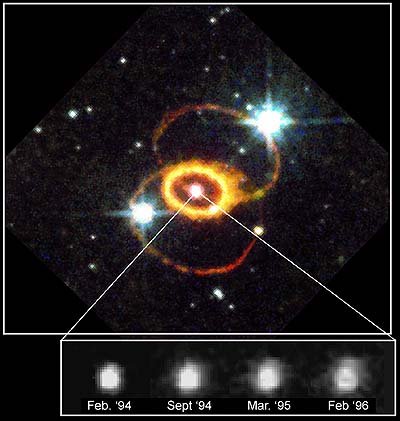
“Ten years ago the most notable supernova of modern times was observed. In February 1987, light reached Earth from a star which exploded in the nearby Large Magellanic Cloud galaxy. Supernova 1987a remains the closest supernova since the invention of the telescope. The explosion catapulted a tremendous amount of gas, light, and neutrinos into interstellar space. When observed by the Hubble Space Telescope (HST) in 1994, large strange rings were discovered whose origin is still mysterious, although thought to have been expelled even before the main explosion. More recent HST observations shown in the inset, however, have uncovered something actually predicted: the expanding fireball from the exploding star. The above high resolution images resolve two blobs flung out from the central explosion. "
Copyright: Public domain
#586 M51: The Whirlpool Galaxy
Credit: January 25, 1997
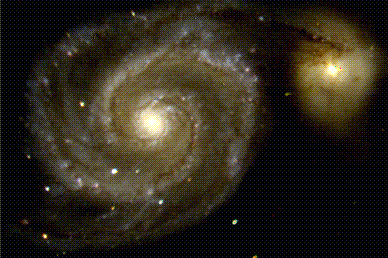
“The Whirlpool Galaxy is a classic spiral galaxy. At only 15 million light years distant, M51, also cataloged as NGC 5194, is one of the brighter and more picturesque galaxies on the sky. The smaller galaxy appearing here above and to the right is also well behind M51, as can be inferred by the dust in M51's spiral arm blocking light from this smaller galaxy. Astronomers speculate that M51's spiral structure is primarily due to it's gravitational interaction with this smaller galaxy."
Copyright: Public domain
#587 Aurora and Orion
Credit: January 26, 1997
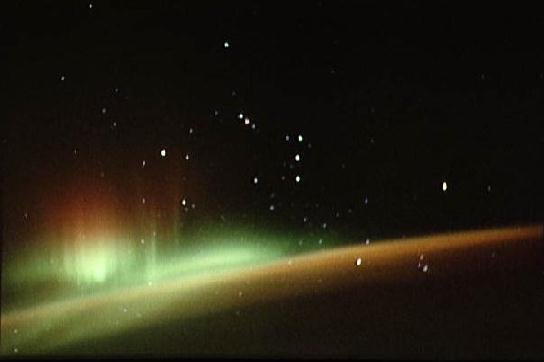
“Looking toward the south from low Earth orbit, the crew of the Space Shuttle Endeavor made this stunning time exposure of the Aurora Australis or southern lights in April of 1994. Aurora are visible at high northern latitudes as well, with the northern lights known as Aurora Borealis. They are caused by high energy electrons from the Solar Wind which are funneled into the atmosphere near the poles by the Earth's magnetic field. The reddish colors occur at the highest altitudes (about 200 miles) where the air is least dense. At lower altitudes and greater densities green tends to dominate ranging to a pinkish glow at the lowest. The familiar constellation of Orion the Hunter is clearly visible above the dark horizon in the background. Because of the shuttle's orbital motion, the bright stars in Orion appear slightly elongated."
Copyright: Public domain
#588 A Prominent Solar Prominence January 27, 1997
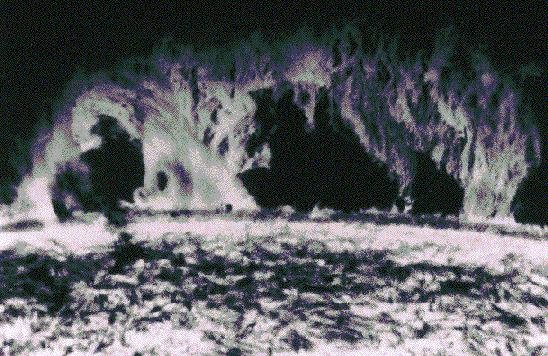
“One of the most spectacular solar sights is a prominence. A solar prominence is a cloud of solar gas held above the Sun's surface by the Sun's magnetic field. The Earth would easily fit under one of the loops of the prominence shown in the above picture. A quiescent prominence typically lasts about a month, and may erupt in a Coronal Mass Ejection (CME) expelling hot gas into the Solar System. Although thought by many to be related to the magnetic field, the energy mechanism behind a Solar prominence is still unknown. "
Copyright: Public domain
#589 Open Cluster M50
Credit and Copyright: January 28, 1997
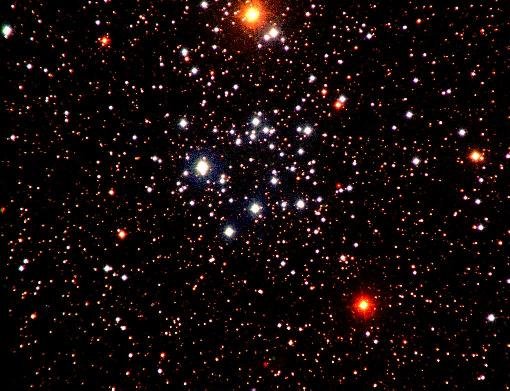
“Many stars form in clusters. Two types of star clusters are visible in our Milky Way Galaxy: open clusters and globular clusters. Open clusters like M50, shown above, typically contain hundreds of stars, many of which are bright, young, and blue. In fact, most of the bright blue stars in the above picture belong to M50, but most of the dimmer, red stars do not. M50 lies about 3000 light-years from Earth and is about 20 light years across. Open clusters tend to have irregular shapes and are mostly found in the plane of our Galaxy. "
Copyright: Public domain
#590 NGC 869 & NGC 884: A Double Open Cluster
Credit and Copyright: January 29, 1997
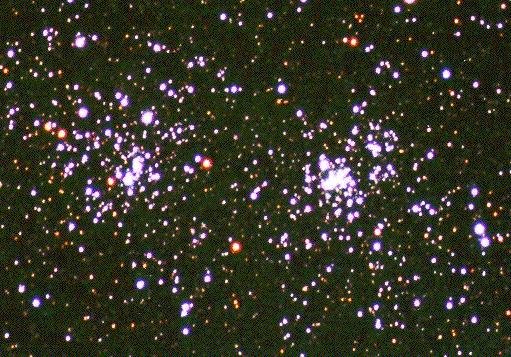
“Most star clusters are singularly impressive. But open clusters NGC 869 and NGC 884 are doubly impressive. Also known as "h and chi Persei", this rare double cluster, shown above, is bright enough to be seen from a dark location without even binoculars. Although their discovery surely predates written history, the "double cluster" was notably cataloged by the Greek astronomer Hipparcos. The clusters are over 7000 light years distant toward the constellation of Perseus, but are separated by only hundreds of light years."
Copyright: Public domain
#591 Earth's Temperature
Credit: January 30, 1997
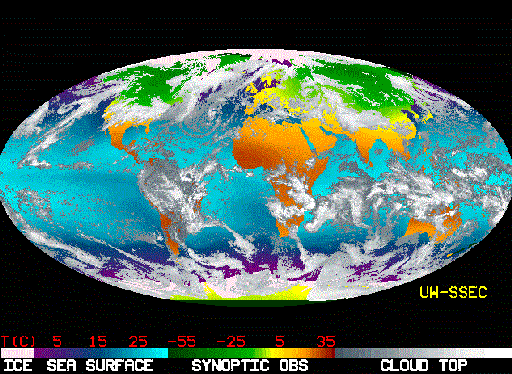
“What's the temperature outside? No matter where you are on Earth, the above map can tell you. This global montage was created using the temperature data from numerous satellites orbiting the Earth. This map indicates temperatures recorded early on January 26th, 1997, but an even more recent map -- updated every 6 hours -- is usually available. For ocean colors on the map, lighter shades of blue indicate warmer temperatures, while for the land, red hues indicate relative warmth. Just looking at the map one can see that summer warms Earth's southern hemisphere, while winter chills Earth's northern hemisphere. The key at the bottom lists temperatures in degrees Centigrade that can be easily converted to degrees Fahrenheit. "
Copyright: Public domain
Upvote! Resteem! Comment! As you like it! Thank you for attention!
Good Luck!This post was resteemed & upvoted by @superbot - the Best Resteem bot on Planet !
Follow for 10 minutes ,
Send 0.100 Steem/Steem Dollar and the URL in the memo that you want resteemed and upvoted.
So don't waste any time ! Get More Followers and gain more Visibility With Superbot .